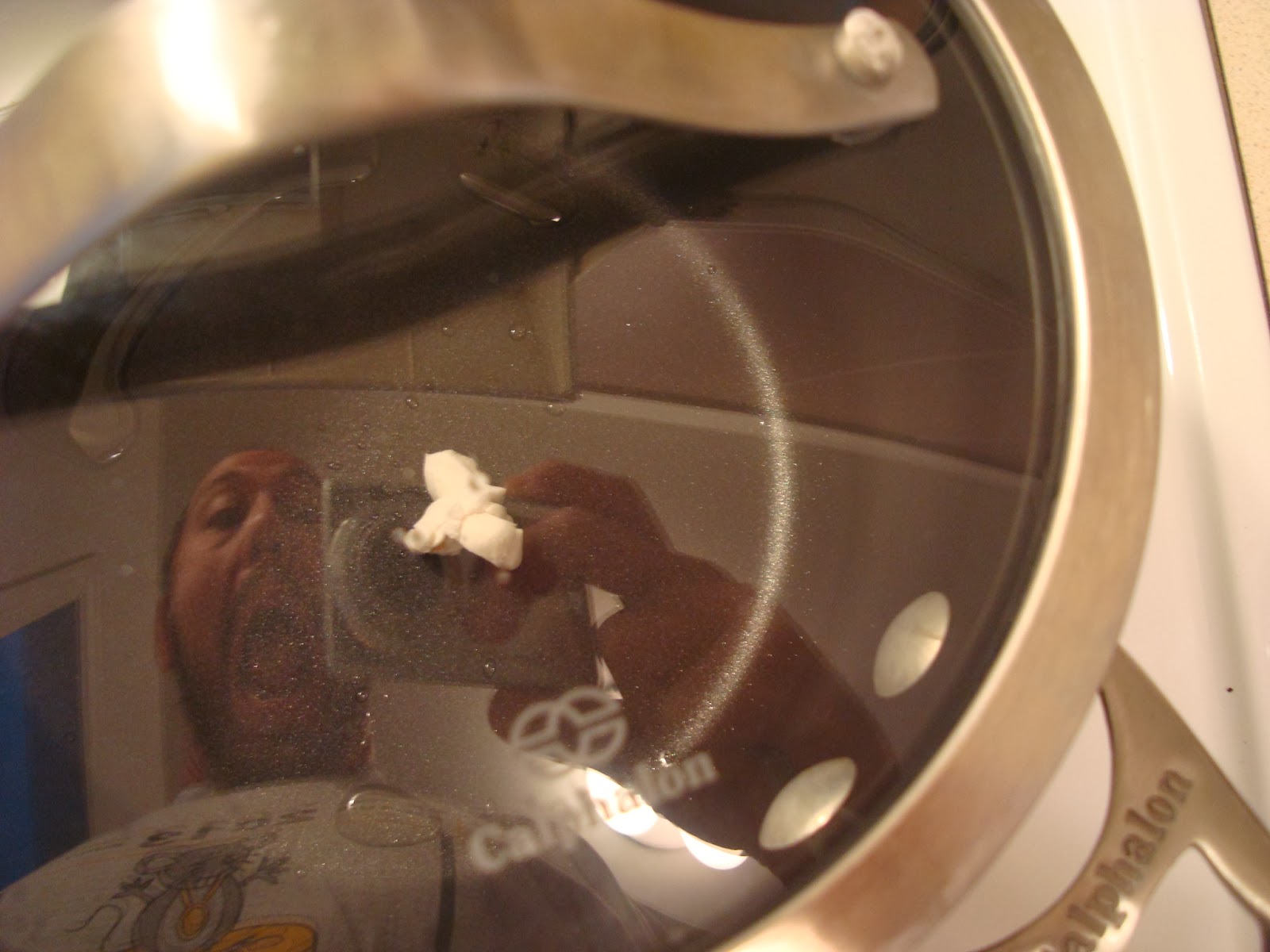I finished Book 4 of the Oxford US History Series, McPherson's
Battle Cry of Freedom.
I know what you're thinking. Another Book Post. Super Duper. I'm including some random dinner pics just because I don't know why.
I've read well over 3 thousand pages covering the first hundred years of our nation's history. Or third hundred years, if you count the nearly two centuries between the Jamestown and Paul Revere's Ride.
The most interesting of the volumes was
What God Hath Wrought (number 3) about the antebellum period between the War of 1812 and the Mexican War. This was a period of transition between the bizarre, alien world of the Founders, one we wouldn't recognize today, and the America that we know. During the antebellum period, they invented balloon-frame houses, working for hourly pay, travelling in winter, childhood, and democracy.
The most exciting was number 4, the Civil War one. I haven't read extensively on the Civil War since high school when my parents bought me the
Time Life series. I read all of those lying on my bedroom floor. I'm not as limber as I used to be. Now I read on furniture. I also noticed my interests have shifted since then.
In high school, I was more interested in the Eastern Theater battles between the Lee's Army of Northern Virginia and the Army of the Potomac. Now, I'm more interested in the effects of battles in the Western Theater, where the war was actually won.
 |
| Pickled Asparagus |
And I'm more interested in the politics and society than in the battles themselves. Reading about terrified men and boys torn to pieces by low velocity rifle fire and canister shot, by the thousands, isn't quite as thrilling as it used to be. American military deaths in the Civil War add up to 12 Vietnams. In fact, if we lost the same proportion of soldiers to population over time in Vietnam as in the Civil War, the Vietnam War would have cost 4 million American lives. Two months ago the official POW/MIA numbers from Vietnam were updated to 1,643. The Union POWs who died at Andersonville Prison alone numbered ten times that.
And they say, well casualties in the Civil War were so high because you have Americans fighting Americans. Sure. If you allow for that, and account that the total casualties were roughly equal for both sides, the North and South each lost around 6 Vietnams worth of men in 4 years.
The sheer volume of slaughter is mind-blowing. So I prefer to read about Lincoln's political maneuvering to pass the 13th Amendment and the diplomatic loopholes of commissioning a blockade runner in a neutral, foreign country.
OK, on to less morbid subjects.
What's Next
These books:
Reconstruction
One does not slog through that much US History just to drop the subject and walk away. No. But here's the rub. There's a two volume sixty year gap between
Battle Cry of Freedom and
Freedom from Fear, the installment covering the Wall Street Crash of 1929 through the end of World War II. True story: almost half of that thirty years was the FDR administration.
Oxford University Press has tentatively promised that the volume covering the Progressive Era or Gilded Age, basically everything from the end of Reconstruction through the Wall Street Crash, is coming out this year. (Note: Gilded Age was the name that rich white men came up with because it sort of sucked for everyone else.) That still leaves me with a thirty year gap.
 |
| Pumpkin Pancakes |
So I will fill that gap, in part, with Eric Foner's
Reconstruction. Not an Oxford History book. But it's supposed to be the definitive work on the Reconstruction era.
Before I begin my next 800 page history book, I need to partake of a little literary junk food. A little light reading. Most days, I eat healthy, homemade from scratch, mostly vegan dinners. But once a week I need something gross and dirty like a bacon cheeseburger (actually, yesterday I made beef tacos). The same goes with books. I read literary masterpieces and masterworks of academic historians. But I need to get in some greasy pulp fiction from time to time.
The Dresden Files
Storm Front, book one of the
Dresden Files series, comes highly recommended by a hermit I know in Central Texas.
Lucy, let me 'splain.
There are a myriad of subgenres within Fantasy. You're probably most familiar with High Fantasy, which encompasses Tolkien, Lloyd Alexander, Terry Brooks, Robert Jordan, Steven Erikson, George R. R. Martin (actually, Martin is Medievalist, but who am I to split hairs), and many more. It's epic, it has magic and swords and battles and all of that. Woot.
But it's only one of many. There's Steampunk and and Low Fantasy and Dark Fantasy and Historic Fantasy a bunch of others I would get too bored to list because they're basically all Fantasy with a different adjective.
One I find wildly compelling is Contemporary Fantasy (which overlaps heavily with Urban Fantasy). Contemporary Fantasy is fantasy that takes place in our world and our time. The most notable examples are pretty much anything by Neil Gaiman or the TV shows
Supernatural,
Buffy,
Once Upon a Time, etc.
Only, when you get to Contemporary Fantasy novels, most of them are either Young Adult or Paranormal Romance or both.
Harry Potter is a good example.
Twilight is a bad one.
 |
| Black Bean Sweet Potato Tacos |
Then you have the
Dresden Files. Which is one of the few (if only) adult Contemporary Fantasy series that doesn't deal extensivly with moping teenage girls dating vampires. In many ways it's like
Supernatural. It combines the noir private detective genre with monsters and zombies.
The Problem of Fantasy
I could go on at length about my issues with High Fantasy. Don't get me wrong. I started there. I cut my teeth on Tolkien. We all did. But grave sins are committed in the name of Fantasy, and it's time to give the genre an overhaul.
OK, the quickest of explanations.
Fantasy traces its roots to the old myths and legends,
Beowulf,
The Odyssey,
Le Morte D'Arthur, etc. Those stories, however, weren't set in ancient times or made up lands. They unfolded in settings contemporary to their original listeners/readers. Beowulf has characters that wield swords and hang out in mead halls because at the time it was composed, people wielded swords and hung out in mead halls.
 |
| Carrot Soup with Lemon Tahini Dollop and Roasted Chickpeas |
The other issue is society. Tolkien and CS Lewis wrote for an audience that took nobility and royalty and privileged birth for granted. We had those once in America, but then we fought two wars to make them go away.
Today, the Fantasy Industrial Complex still churns out fiction set in ancient times with an aristocratic society. Because that's how Fantasy started. Sort of like how the Catholic Clergy still wear clothing (and those hats!) contemporary to the Byzantine Empire because that's when they got started.
 |
| Beef Picadillo Tacos with Homemade Salsa |
Everyone is still playing in Tolkien's sandbox. But it's time for a Contemporary American Fantasy. That's my soapbox. And it's just my opinion. There are obviously plenty of people out there still buying books about swords and high kings and prophecies and elves and orcs.
And true, there's been this new wave of dystopian fiction.
Hunger Games,
Divergent, etc. But they're still, really, playing in Orwell's sandbox.
1984 was a Cold War novel and last time I checked, the Cold War was over. The danger to freedom no longer comes in the form of a despotic government regime.
In this respect, Margaret Atwood's
Oryx and Crake is probably the best vision of the dystopian future now available to us.
Star Wars EU
So, after
Return of the Jedi, people started writing a corpus of Star Wars books. The Extended Universe novels are all officially sanctioned and licensed by the chinless George Lucas himself.
You may say, that's not very nice. Well, I hold Lucas solely responsbile for the fourth
Indiana Jones. And that movie is unforgivable. Also Jar Jar Binks.
Says Lucas: "But let me say here once and for all: He was the best damn character in any of the six movies. He was by far my favorite."
Thanks, Chinstrap. Now, please stop making movies.
Back to the EU. The most revered trilogy, by serious Star Wars fans, and by serious Star Wars fans, I mean the people who dress up like Boba Fett and go to conventions, is Timothy Zahn's Thrawn Trilogy. It takes place five years after the Battle for Endor. This Trilogy is very nearly canon. The people who have Rebellion bumper stickers and X-Wing tattoos and the original 1977 C-3PO action figure still in the package consider Thrawn as important to the mythos as the movies.
Since there's a new movie coming out in the wake of the Chinless Master selling the franchise to Disney and since there's considerable controversy in the fanbase because the movie is projected to diverge from the Zahn narrative, I thought I'd give it a look see.
The Fault in Our Stars
I don't have to tell you the title is a reference to Shakespeare's
Julius Caesar. We all know that. Yawn.
I've been a super fan of John Green and his brother Hank Green for quite some time. John does the Crash Course series for history and literature and Mental Floss on Youtube. Hank does Crash Course for science and he does Sci Show. Together they do Vlog Brothers. Both very smart, very entertaining, very funny guys. I could go on but it would get weird.
Unless it already did.
I found out recently that John Green wrote a handful of books, one of which,
The Fault in Our Stars, is soon to be a Major Motion Picture at a theater near you. One of my favorite things to do is read the book before the movie comes out and then forget to watch the movie. I plan to do that with this one.
Parting Shot
You weren't going to eat... all of that beef... were you?
What should we blog about next?

























































